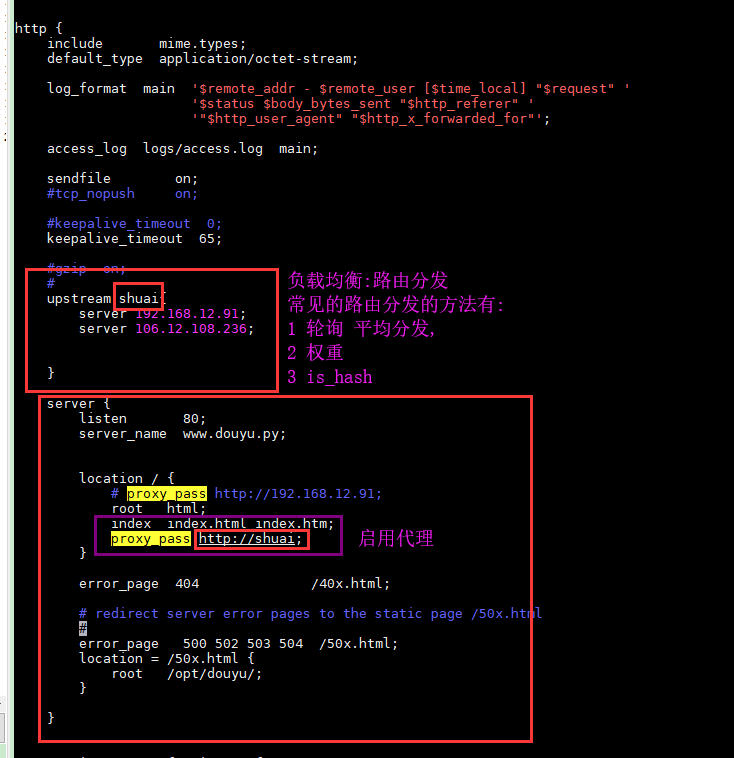一 反向代理
1.实验准备,准备2台nginx机器
机器1 192.168.11.37 用作 web服务器,用作数据返回
机器2 192.168.11.167 用作nginx反向代理服务器
在windows中访问 代理服务器,然后让代理服务器 去拿 web服务器的数据
windows > 192.168.11.158 > 192.168.11.37
windows < 192.168.11.158 < 192.168.11.37
2 服务器配置
准备机器1,只是对数据页面的一个返回
#配置信息如下 server { listen 80; server_name 192.168.11.37; #charset koi8-r; location / { root html; index index.html index.htm; } }
准备机器2,用作nginx的反向代理服务器,这个机器不存数据,只转发请求
配置如下
server { listen 80; server_name 192.168.11.158; #charset koi8-r; #access_log logs/host.access.log main; #在这里进行反向代理配置 #192.168.11.158/ location / { proxy_pass http://192.168.11.37; #代理服务器 #root html; #index index.html index.htm; } }
二 nginx的负载均衡,顾名思义,
1.集群是什么
一堆服务器做一件事
2.集群性能很高
淘宝本来的核心支付服务器是小型机,非常昂贵,且难以维护
后来都讲 服务器更换为集群架构
一堆便宜的服务器,维护者一个功能运转
3.高可用
单点机器很可能宕机
集群单机机器宕机,不会影响整体的运转
nginx负载均衡的配置
1.实验如下
准备三台机器
机器1 nginx负载均衡器(发牌的荷官) 192.168.11.158
nginx.conf配置如下
upstream nginx_pools { //负载均衡分配到各个服务器 server 192.168.11.37 weight=10; server 192.168.11.167 ; } server { listen 80; server_name 192.168.11.158; #charset koi8-r; #access_log logs/host.access.log main; #在这里进行反向代理配置 #192.168.11.158/ location / { proxy_pass http://nginx_pools; #负载均衡到nginx_pools } }
机器2 准备nginx 返回页面数据 192.168.11.37
nginx.conf配置如下 server { listen 80; server_name 192.168.11.37; location / { root /opt/jd; index index.html index.htm; } error_page 404 /40x.html; error_page 500 502 503 504 /50x.html; location = /50x.html { root html; } }
机器3 也准备nginx 返回页面数据 192.168.11.167
server { listen 80; server_name 192.168.11.167; #charset koi8-r; #access_log logs/host.access.log main; location / { root html; index index.html index.htm; }

负载均衡分配方法
1.轮询(不做配置,默认轮询) 2.weight权重(优先级) 3.ip_hash配置,根据客户端ip哈希分配,不能和weight一起用
注意事项:
实验开始必须关闭防火墙 iptables -F sed -i 's/enforcing/disabled/' /etc/selinux/config systemctl stop firewalld systemctl disable firewalld